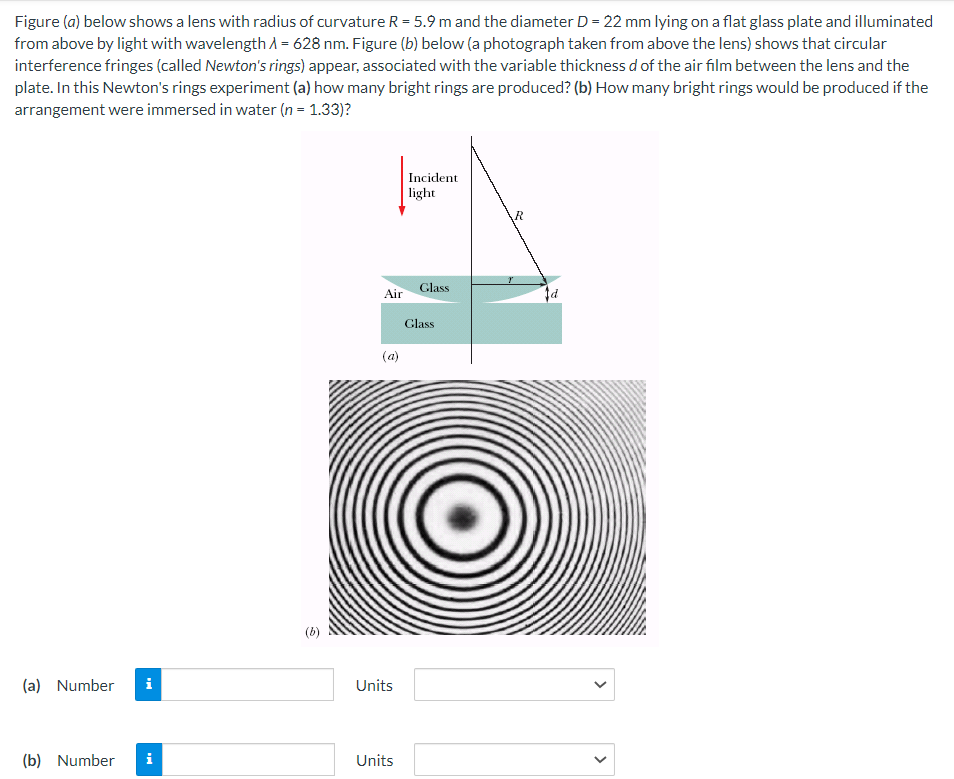Figure (a) below shows a lens with radius of curvature R = 5.9 m and the diameter D = 22 mm lying on a flat glass plate and illuminated from above by light with wavelength λ = 628 nm. Figure (b) below (a photograph taken from above the lens) shows that circular interference fringes (called Newton's rings) appear, associated with the variable thickness d of the air film between the lens and the plate. In this Newton's rings experiment (a) how many bright rings are produced? (b) How many bright rings would be produced if the arrangement were immersed in water (n = 1.33)? (a) (b) (a) Number Units (b) Number Units
